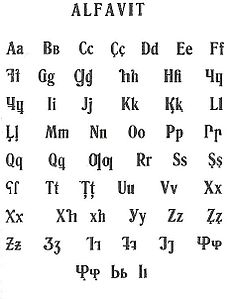H with left hook
| H with left hook | |
|---|---|
 | |
| Usage | |
| Writing system | Latin script |
| Type | alphabetic |
| Language of origin | Abaza language, Kabardian language, proposed for Sotho-Tswana languages |
| Phonetic usage | [ʔ] |
| Alphabetical position | 11th |
| History | |
| Development | |
| Time period | 1920-30 |
| Transliteration equivalents | Ъ, ӏ |
| Variations | |
| Other | |
| Writing direction | left to right |
H with left hook (![]() ,
, ![]() ) is an additional letter of the Latin script which was used in the writing of the Abaza and the Kabardian languages in the 1920s and was proposed for the writing of the Sotho-Tswana language in 1929.
) is an additional letter of the Latin script which was used in the writing of the Abaza and the Kabardian languages in the 1920s and was proposed for the writing of the Sotho-Tswana language in 1929.
Usage[edit]
A. N. Tucker used h with left hook in his proposal for an aphlabet for the Sotho-Tswana language in 1929, with a capital form based on the form of the capital letter H.[1] Clement Martyn Doke used h with left hook to represent a prevelar fricative notably in the description of the Pulana and Kutswe dialects of the Northern Sotho language.[2]
-
Kabardian alphabets throughout history, showing h with left hook.
H with left hook was used in the writing of certain languages of the Soviet Union in the 1930s.
Computing codes[edit]
H with left hook has not yet been encoded in Unicode.
Notes and references[edit]
- ^ Tucker 1929, p. 132, 135.
- ^ Doke 1954, p. 122, 249.
Bibliography[edit]
- Doke, Clement Martyn (1954). The Souther Bantu languages. International African Institute, Oxford University Press.
- Joomagueldinov, Nurlan; Pentzlin, Karl; Yevlampiev, Ilya (2012). Revised proposal to encode Latin letters used in the Former Soviet Union (PDF).
- Tucker, A. N. (1929). The comparative phonetics of the Suto-Chuana group of Bantu languages.





